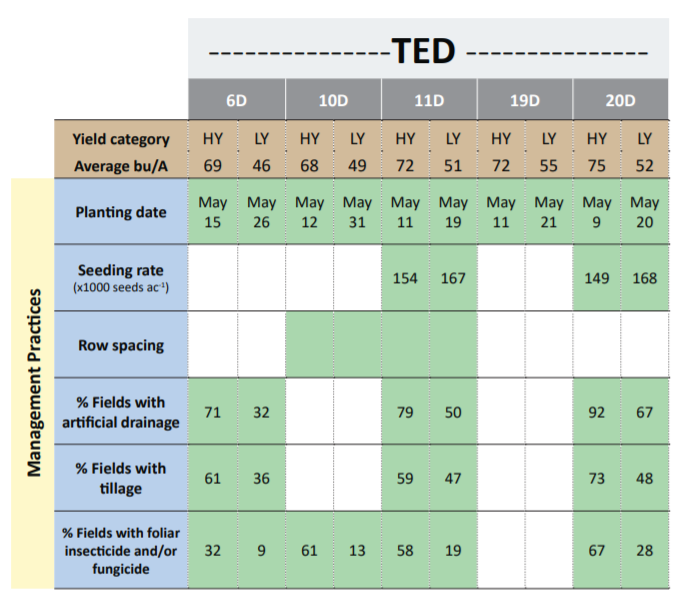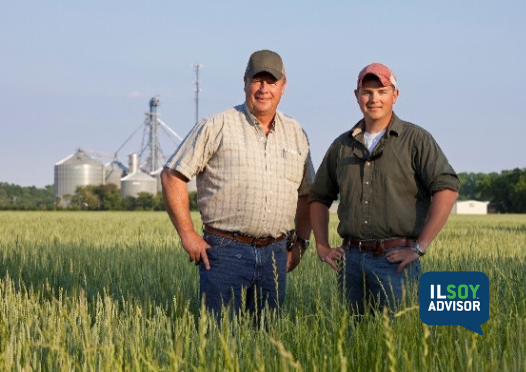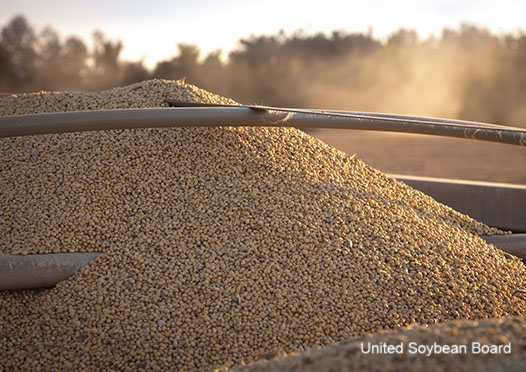Hello again everyone, and welcome to spring (almost). The temps are rising, and we’ve all changed our clocks so planting time will be here very soon. This is the fourth in a series of blog posts from NASS. The earlier blog posts were all about surveys and the statistics we publish from those projects. This time, I am writing about the 2022 Census of Agriculture. It’s coming this year and I urge everyone to respond.
Five years ago, Illinois... Read More →
ILSOYADVISOR POST
Benchmarking Soybeans in Illinois
March 01, 2019
U.S. soybean yields have been trending upwards and Illinois soybean yields are running 6.5 bu/A above the trendline, according to the University of Illinois FarmDoc website.


In the Illinois Soybean Associations Yield Challenge we have seen yields steadily increase over the past decade. In the early years most of yields were in the 50- to 70-bushel range. Today we see most entries in the 80- and 90-bushel range and a number over 100 bushels. The reasons for these dramatic increases have mainly to do with adoption of new best management practices and early planting, along with improvements in genetics and favorable weather patterns.
Illinois recently participated in a Corn Belt-wide 5-year benchmarking survey that was funded by the United Soybean Board and lead by the University of Wisconsin. The Illinois portion of the survey was led by Dr. Emerson Nafziger at the University of Illinois.  According to the recently published report “Illinois participated in a multi-state project to assess soybean yield gaps and the management practices responsible for them. The yield gap is defined as the difference between yield potential, as determined by climate and soil, versus producer average yields.” In this survey producers were asked to provide information from fields planted with soybean from 2014 to 2017. They collected information on field location, yield, crop management and applied inputs from a total of 527 Illinois fields.
According to the recently published report “Illinois participated in a multi-state project to assess soybean yield gaps and the management practices responsible for them. The yield gap is defined as the difference between yield potential, as determined by climate and soil, versus producer average yields.” In this survey producers were asked to provide information from fields planted with soybean from 2014 to 2017. They collected information on field location, yield, crop management and applied inputs from a total of 527 Illinois fields.
 According to the recently published report “Illinois participated in a multi-state project to assess soybean yield gaps and the management practices responsible for them. The yield gap is defined as the difference between yield potential, as determined by climate and soil, versus producer average yields.” In this survey producers were asked to provide information from fields planted with soybean from 2014 to 2017. They collected information on field location, yield, crop management and applied inputs from a total of 527 Illinois fields.
According to the recently published report “Illinois participated in a multi-state project to assess soybean yield gaps and the management practices responsible for them. The yield gap is defined as the difference between yield potential, as determined by climate and soil, versus producer average yields.” In this survey producers were asked to provide information from fields planted with soybean from 2014 to 2017. They collected information on field location, yield, crop management and applied inputs from a total of 527 Illinois fields. The research team grouped areas into TED (technology extrapolation domains) regions. In Illinois there were 5 TEDs. Individual TEDs represent similar climate and soil characteristics, annual growing-degree day accumulation, precipitation, temperature fluctuations and plant available water-holding capacity in the rooting zone. In Illinois the higher-yielding fields were planted earlier and sprayed with foliar insecticide and/or fungicide or associated with artificial drainage and tillage.
Survey results from Illinois are shown  in the adjacent table. Cells shaded in green show a significant difference between high (HY) and low (LY) yield fields. Higher yields in the HY category were associated with:
in the adjacent table. Cells shaded in green show a significant difference between high (HY) and low (LY) yield fields. Higher yields in the HY category were associated with:
 in the adjacent table. Cells shaded in green show a significant difference between high (HY) and low (LY) yield fields. Higher yields in the HY category were associated with:
in the adjacent table. Cells shaded in green show a significant difference between high (HY) and low (LY) yield fields. Higher yields in the HY category were associated with:- Earlier planting date and lower seeding rates.
- Row spacing in general did not impact yield, however:
- TED 10D had more fields with 30-inch row spacing in the HY group
- TED 11D had more fields with 15-inch row spacing in the HY group.
- Increased incidence of artificial drainage.
- Implementation of tillage vs. no-till.
- Greater use of foliar insecticide and/or fungicide.
The complete results of the full study can be found at https://coolbean.info/wp-content/uploads/sites/3/2019/02/2019_Soybean_Benchmarking_ReviewFinal.pdf
Soybean agronomist Daniel Davidson, Ph.D., posts blogs on topics related to soybean agronomy. Feel free to contact him at djdavidson@agwrite.com or ring him at 402-649-5919.





Comments
Add new comment